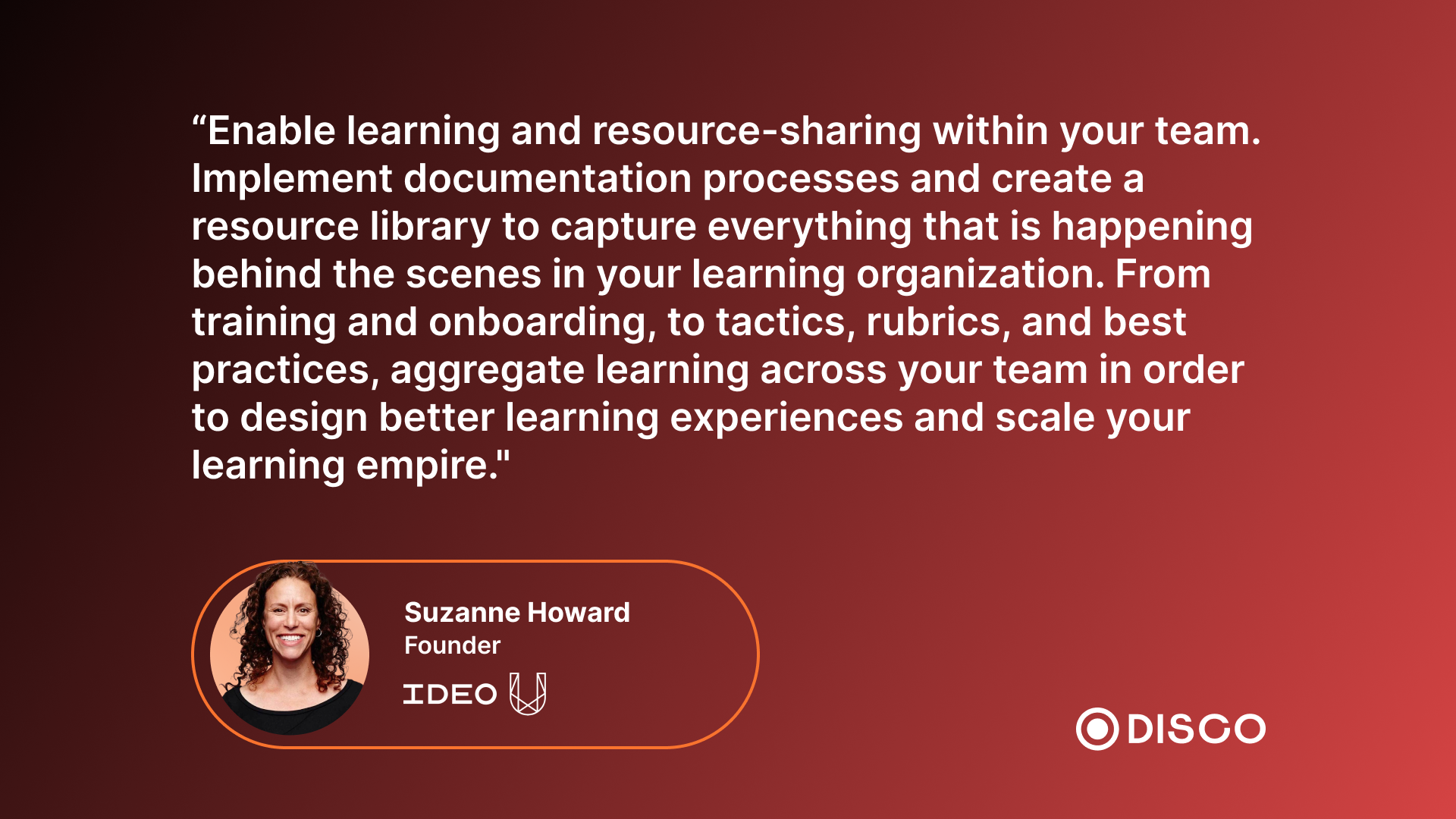Designing Virtual Learning Experiences: Top 6 Tips

TL;DR
- What it enables: Effective course design creates transformational virtual learning experiences that help members achieve specific career and personal goals.
- What it includes: Niche-focused curriculum, member-first design, interactive content, flexible experimentation, accessible pricing, and strong community building.
- Key elements: Unique insights from customer research, actionable learning outcomes, constant iteration based on feedback, and tangible skill development.
- Top strategies for 2026 include: Building around specific niches, prioritizing member needs over assumptions, creating hands-on experiences, and fostering micro-communities.
- Why it matters: Well-designed courses generate real value, improve retention, enable word-of-mouth marketing, and create sustainable learning businesses.
Six Insights On Course Design, Curriculum Creation, and Member Support
Build a foundation around some unique insight or niche
Though scaling membership to your virtual learning experience is important for business, you shouldn’t be designing a course for the masses. Rather, you should be designing for a specific type of person, a particular industry, or for folks who want to learn a certain professional or personal skill. The design phase starts with a thoughtful or unique insight you’ve uncovered during the customer research phase.
This was true for Sergei Revzin, half of the founding team at School16. They teach members the foundational skills needed to find a role in four areas of tech. Sergei shares
“We had a lot of assumptions as to who [our members] would be. The pandemic had just started, and we had people in healthcare, retail, teaching, and other industries completely reconsidering what they were doing because they were not being served by their employers.”
“We decided, ‘Hey, people want to learn from other people that are already in these jobs. We have built a good network of people over the years — why don't we bring them to the people looking for these jobs and they can ask questions directly? Through that process, we got to interact with probably close to one hundred job seekers, career changers, and recent graduates over a very short period of time, which means our learning was very condensed and very powerful.”
Those insights allowed Sergei and brother Vadim to build a curriculum based on what actionable training was needed to be successful in these tech roles.
For others, the use case may be more obvious. Take BatteryMBA, for example: It’s aptly named, as the battery industry in Europe is growing at an astonishing rate. There’s a need to upskill and train over 800,000 people in the battery industry by 2026, so the insights were already there to begin designing a training program. What they did discover early on, however, was how many people this niche training could be relevant to. Simon Engelke, founder of BatteryMBA and PhD-trained battery engineer, recalls:
"When we started, we had an even smaller niche in mind like PhDs, similar to myself, in the battery sector. Then we were amazed at how this niche grew. Now, we have people from investment firms and different sectors in the program and sometimes, you realize your niche was quite much bigger than you thought it might even be.”
Above all else, draw insights from learning what your prospective members really need to learn and gain in order to succeed in whatever comes next for them, be it in their career or personal lives. When you lead with achieving human-centric goals over revenue-based goals, everyone wins.
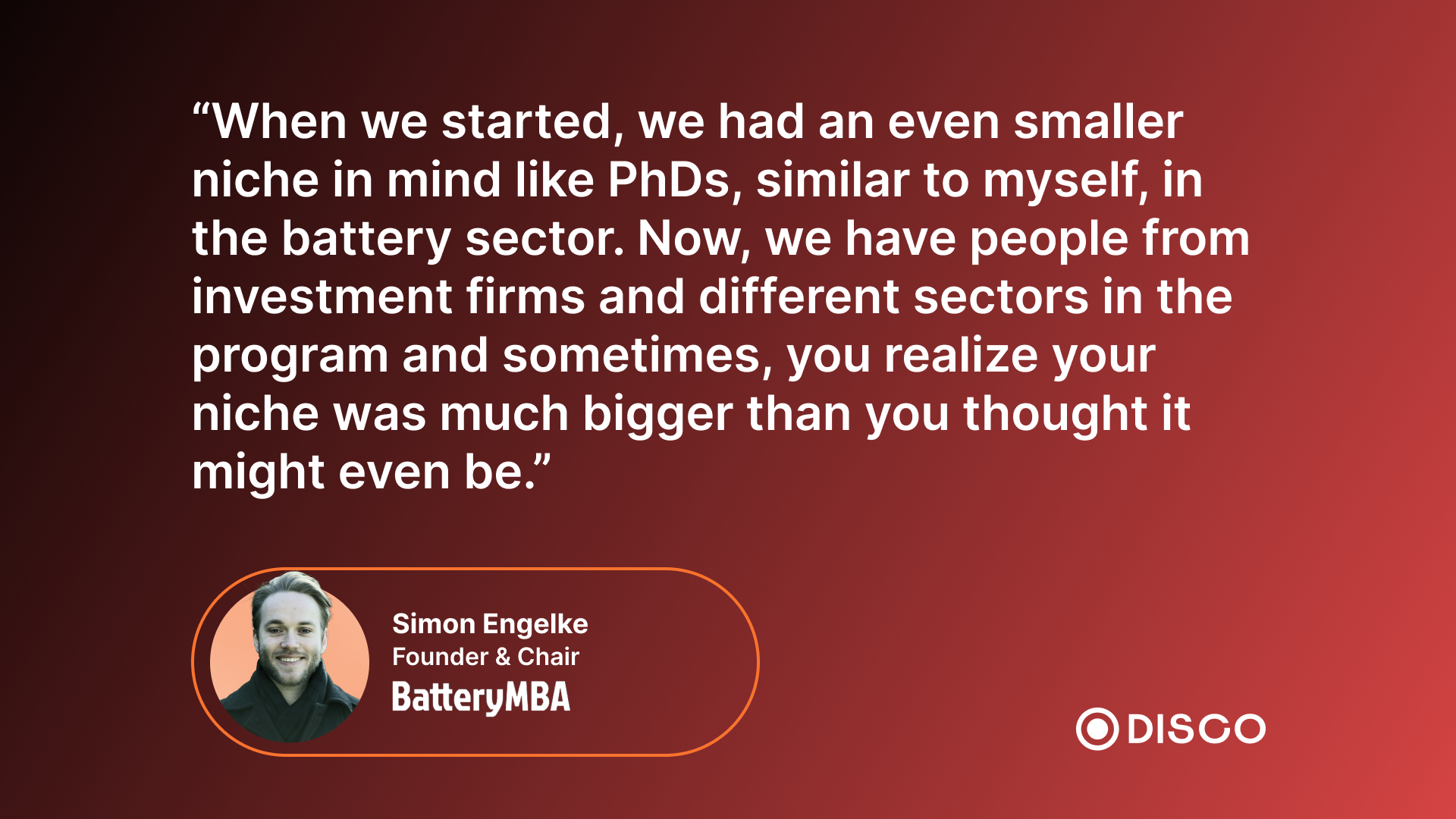
Put your members' needs first
If you’re designing a virtual learning experience around subject matter you have personal experience or expertise in, it can be easy to rest on your laurels and teach what you think is best. While your perspective is immeasurable and valuable to your members, it’s important to put their needs first when creating lesson plans and curriculum.
To design a members-first experience, ask yourself the following questions:
- What skills, technology, and abilities are most relevant for this particular niche today?
- What goals are my prospective members hoping to achieve?
- How soon are they wanting to achieve these goals?
- What tools will members need to achieve these goals?
- What type of certification, portfolio, projects, or proof of learning will they walk away with?
Despite their predispositions, the team at Dribbble quickly pivoted the design, structure, and format of their Product Design Course to meet the members’ needs and address their real challenges. They achieved this by allowing members from every time zone, supporting learners in completing portfolio projects, fostering connection and community building opportunities like a career prep week, and connecting learners to hiring managers so that they can land their first job in product design.
Constant iteration is critical to business success (and something we’ll cover later on in this article), but for the team at d.MBA, frequent iteration cycles generate feedback that can help inform future versions of course design that meet member needs:
“We teach designers very hard core business skills like prototyping with numbers. A lot of designers are afraid of using numbers, so we have to go through changing that mindset while also teaching them how to use these skills. After every iteration, we have interviews and surveys, but we pay attention to the behavior, too. We cannot just see what's already working and want to copy it. What works best is that you actually listen to your community and your customers and see what works for them,” says d.MBA founder, Alen Faljic.
Forego any biases or preconceived notions about what you think your members need; listen to their experiences, feedback, and specific asks to help guide your course design.
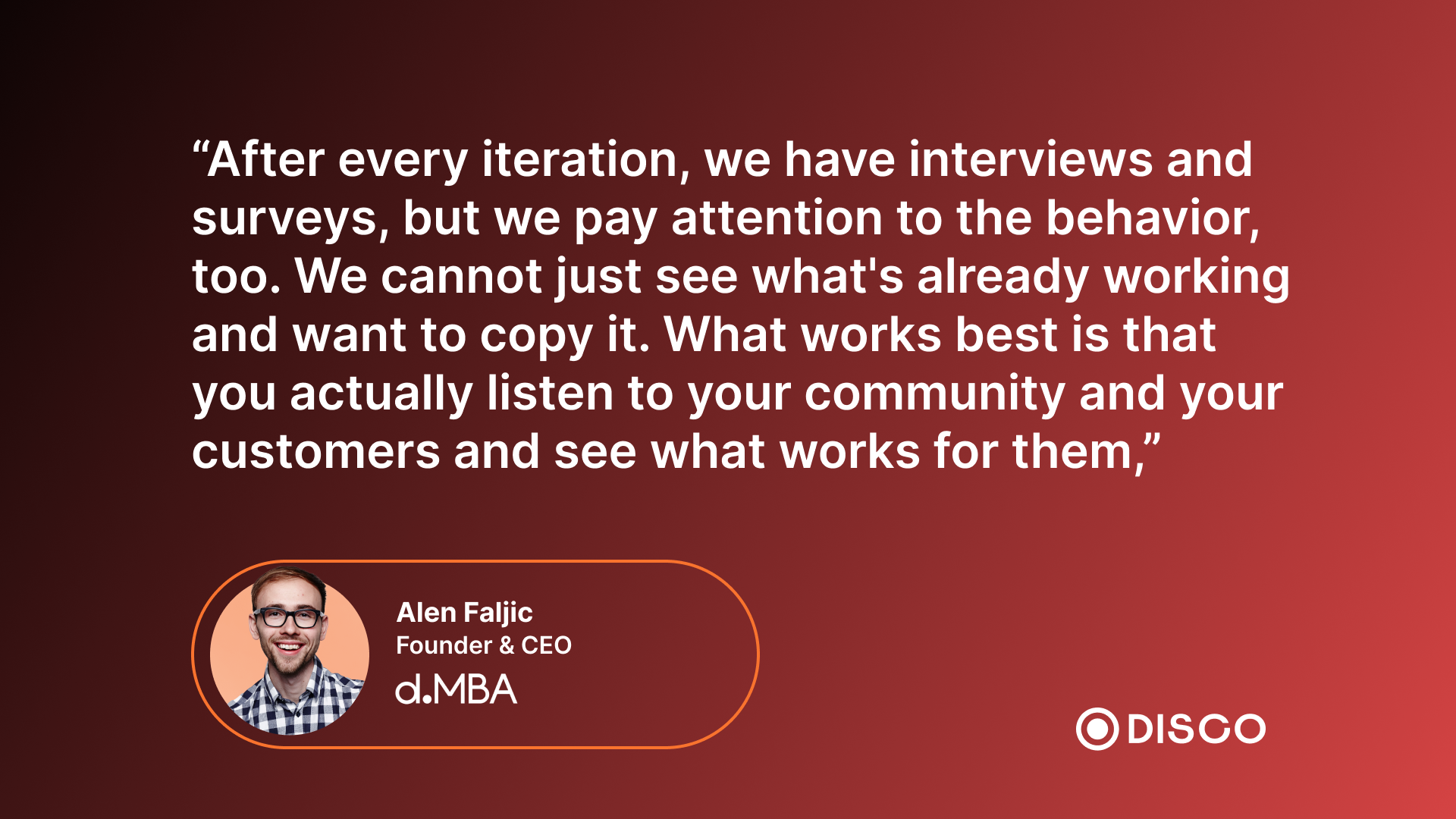
Make your curriculum tangible, actionable, and interactive
With virtual learning and alternative education being the antithesis to sitting in a lecture hall or reading a textbook and taking nothing away from your studies, it’s imperative that your course includes learnings and teachings that are interactive and have real goals and outcomes attached to them.
For example, SaaS Academy’s Dan Martell’s teachings focus on the emotional, mental, or physical blockades that prevent a business founder or leader from reaching certain goals. You can “learn” almost anything these days from a Google search or a YouTube video, but you can only actually apply those learnings when you immerse yourself in those teachings. Dan shares:
“It’s not an information problem. It’s a motivation problem. It’s a mindset. My client knows they should be doing [this]. How do you create transformational content? You’ve got to focus on the mindset and the beliefs and the objections, not just on the content itself.”
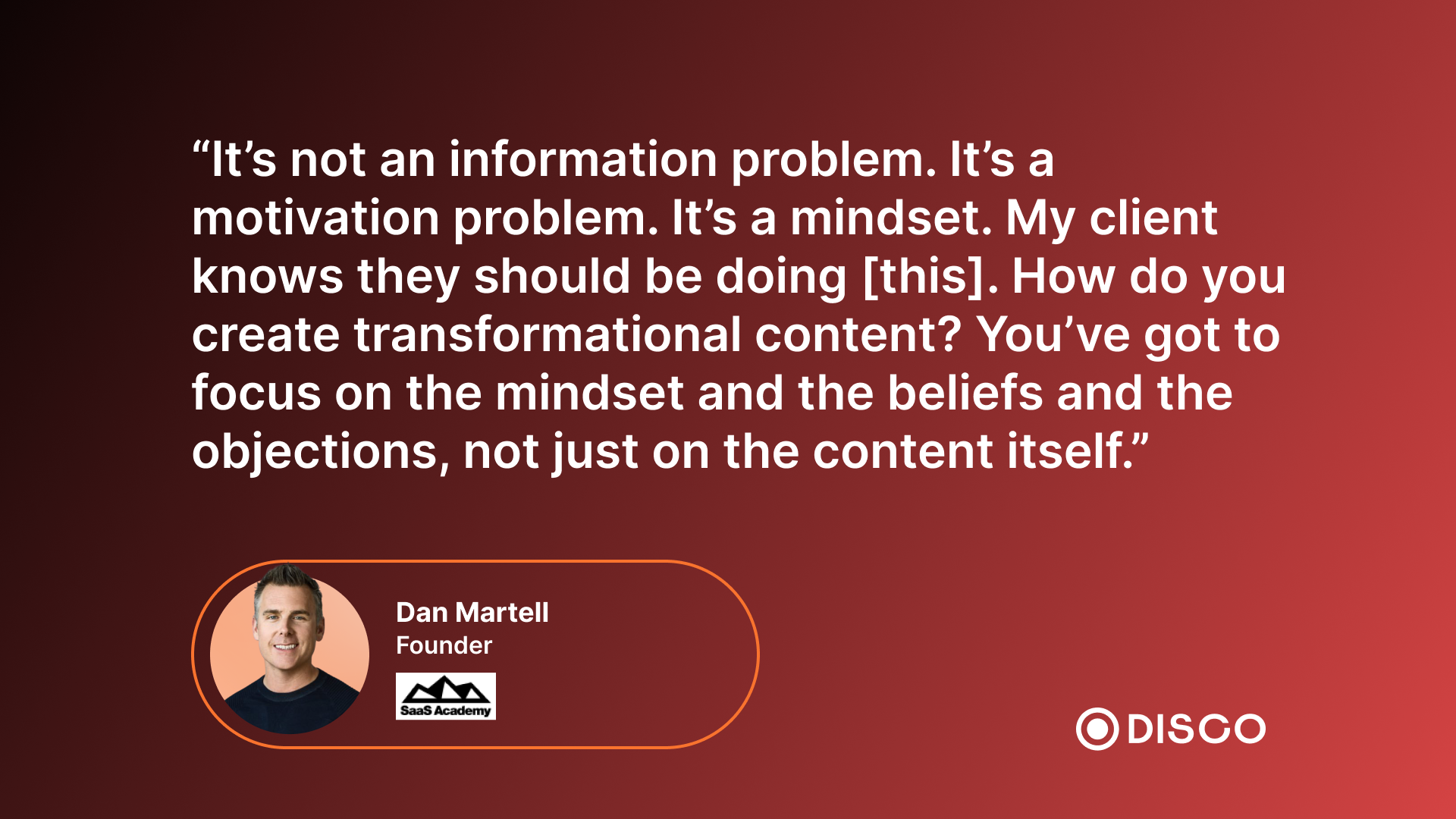
Likewise, Shane Parish created a learning community called Farnam Street to help people become better learners and acquire new skills easier. Though not a micro-school or a bootcamp that we typically see in the virtual learning space, the way Shane approaches his course design (and implores that others do) is to make learning immediately applicable:
“We all have blind spots, especially in the way our education system works when you start specializing, often in high school and continue in university. The reason you do that is to make yourself employable. Employers want you to be able to contribute right away, so you need the vocabulary and you need to learn all the basics before you start at work.”
“Reality is, we're never going to eliminate our blind spots, but we can definitely start learning about timeless principles that apply across broader situations. A basic knowledge of psychology helps you be a better leader. A basic knowledge of accounting helps you be a better leader. And so when you start taking these different disciplines, not only can you communicate better with other people, you understand how they learned and what they consider as important, which helps you as a leader.”
When you design your course around a hands-on, goal-oriented curriculum and create an experience aimed to transform your members’ lives, you’ll create real value. Value is crucial to retaining current members as well as recruiting prospective members.
As Eliot Gattegno, On Deck’s former Head of Education, says “Value is achieved based on you helping people achieve the outcomes and goals that they’re hoping for.”
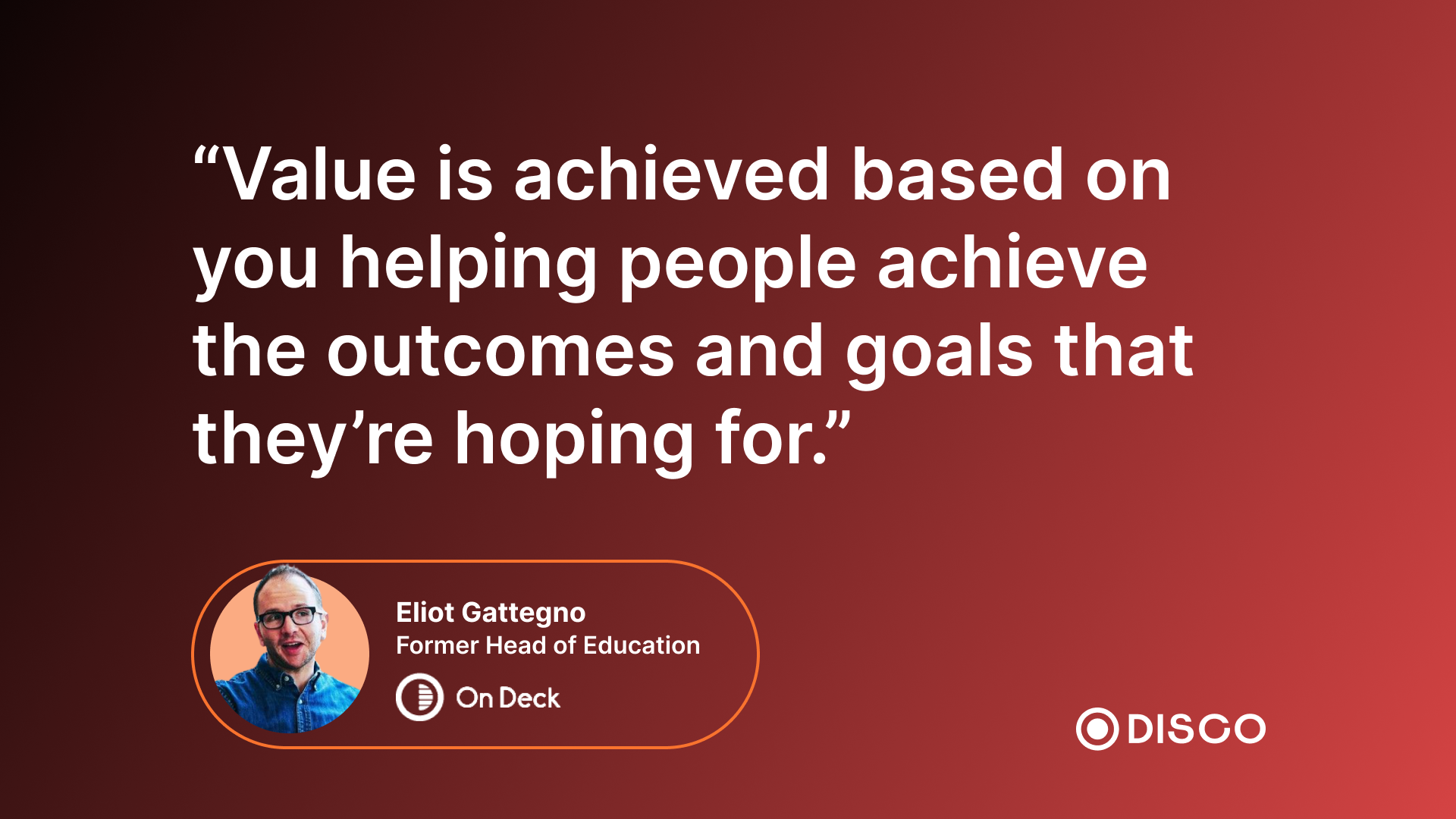
Be flexible to change and experiment – constantly
Chances are, the first iteration of your course design will not be the last. In fact, it shouldn’t be — not evolving with the times means your members aren’t gaining topical, timely value.
There are a ton of aspects to your program you can experiment with and change; the delivery method (is it in person? Virtual? Hybrid? Asynchronous? Lecture-based?), the length of the course, the price of the course, even the content and context of the course can change based on member needs.
School16 experimented with a number of these aspects in their early days, and the findings from frequent testing and regular iterations of course length and content helped them land on their über-successful model they run today. As co-founder Vadim shares:
“We started off with eight weeks because we decided, ‘You know what? Most of these folks don't know much about tech because they come from completely different disciplines. They need that foundational understanding of what it's like to work in tech.’”
While eight weeks was a great amount of time for people to get their foot in the door and understand what type of tech role they wanted, it wasn’t enough time to train them and make them a viable, hireable candidate.
“Some people want roles that require a little bit more education,” Vadim admits. “Most people were craving a course like our first eight week program, but they actually wanted to dive deeper into product management class or sales, even though they took a two-week module on it. So we decided to keep our customers longer and help develop their skills in a model that we think works best. That was the impetus for us changing the process from eight weeks to four months to now 16 weeks: the first eight weeks is the same as it always was. But now, in the last eight weeks, you're focused on a niche area of your choice.”
Flexibility is more or less a requirement when baking out virtual learning experiences. While the industry is growing rapidly, it doesn’t have the same legs to stand on that traditional education does. It doesn’t have centuries of history and experience and guardrails. Frequent, constant experimentation is the only way you’ll find your niche and deliver on member needs.
Take Hyrise, for example: They’re a sales training program that’s upskilling tens of thousands of new sales professionals. At first, they had members pay to access their education as well as paying businesses looking for fresh talent. They learned quickly that this model wouldn’t be sustainable and it wasn’t suitable for helping members meet their goals. Co-founder Dominic Blank recalls:
“We knew we had to change something, especially since our mission is to enable people to have a career they love through access to skills, and we didn't really provide access, because paying for that access stood in the way,” Dominic says. “So something had to change. We did a complete change. Not what we do, but how we do it.”
The change was a massive one — de-monetize the B2C side of your business and only monetize the businesses hiring your members. This helped them better focus on training and course design so they could build up their company pipeline and consistently provide viable talent, which generated repeat business with the companies that were hiring.
With flexibility at the helm of your business model, making big changes won’t be so scary. Plus, they’ll be rooted in what’s going to make members happy and successful, which is the foundation for any successful virtual learning experience.
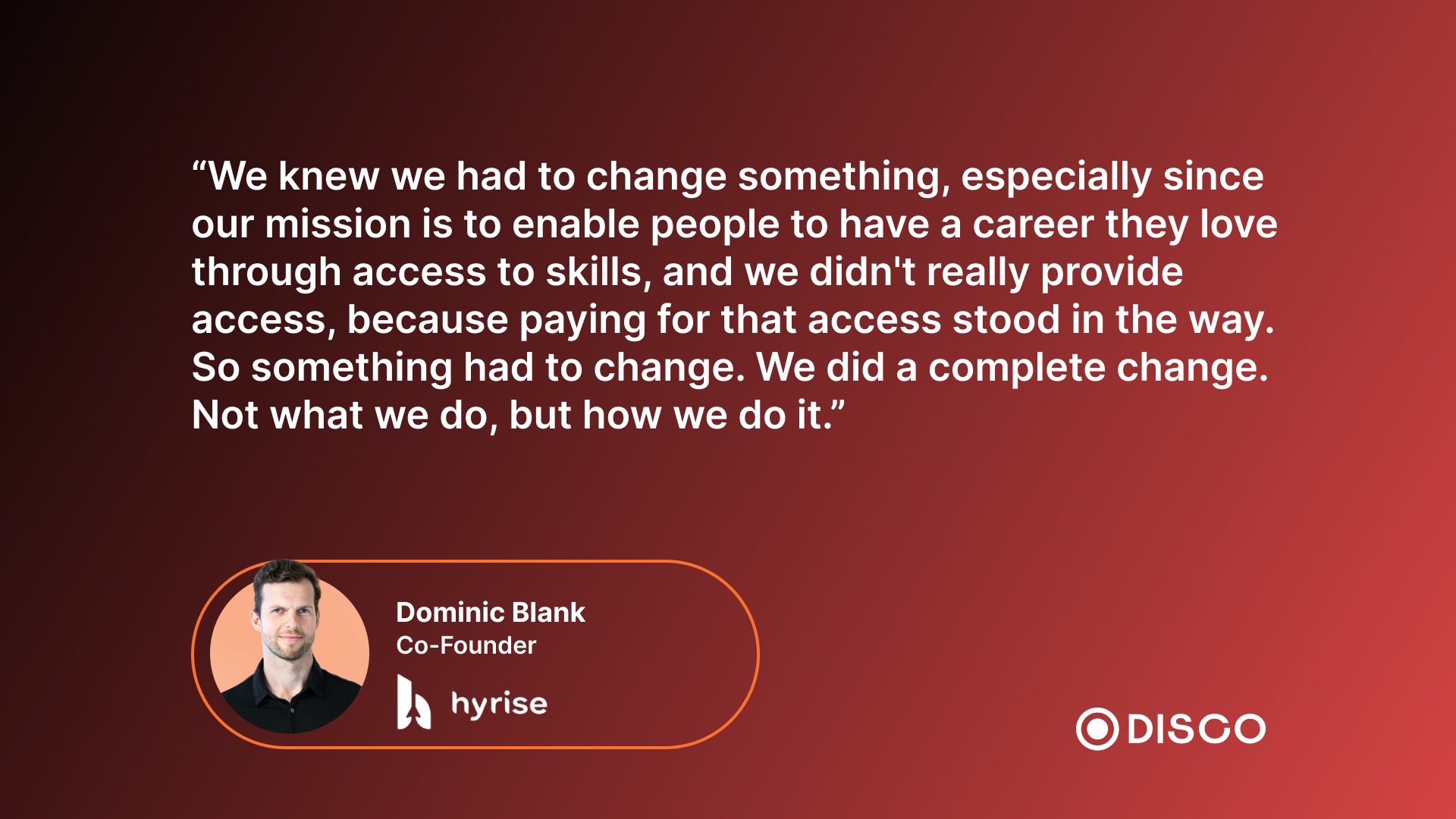
Break down barriers to access with free or afforable options
Part of operating in the virtual learning experience is assuming certain responsibilities within it. One of those is increasing diversity, equity, and inclusion efforts in non-traditional and alternative education. In order to do so, there’s a need to break down barriers to education access.
While you’re likely focused on designing a course that meets paying member needs, don’t forget about opportunities to unlock education access for folks who may not be able to afford or access it otherwise.
Dribbble, for example, offers Try Before You Buy opportunities prior to committing to their Product Design Course. This option creates engagement and activation by providing potential learners with practical tips and valuable learning experiences from industry experts and mentors. This option doesn’t take anything away from the actual course and gives prospective members the peace of mind they need before spending thousands of dollars on a learning experience they’re potentially not sold on fully before committing.
Dribbble also committed to improving DEI efforts and expanding access to education by offering 20-50% discounts to their community as well as scholarships to their already more affordable (to comparable programs) Product Design Course.
But why?
You lose nothing by creating additional, affordable opportunities for learning to your community. What you gain is a happy, active member ready to sing your praises to other prospective members who are willing to pay and participate. The potential for word of mouth marketing and organic referral generation is worth far more than the few dollars you lose by creating an affordable program.
Keep community at the center of your business
There’s a reason community-powered virtual learning is a multi-billion dollar industry, set to grow exponentially over the next 5+ years.
Community is powerful. We see it in society and in pop culture — and education is no different. If the brilliant minds in virtual learning experiences we’ve interviewed over the last few years are any consolation, it’s that a bootcamp, academy, or micro-school can’t thrive without community.
Community also operates differently from program to program. Dan Martell of SaaS Academy creates in-depth intake forms that get to the core of what each founder’s goal is and what they’re looking to achieve so he can put together kindred cohorts of members. Sarah Lacy at ChairmanMe caters to the working woman and develops forums and courses designed to bring women together in conversation and connection.
When you’re hitting on all the above points: finding your niche, driving from insight, and creating for what your members really need, curating a community is a lot easier (and more intuitive to your business).
But it doesn’t end with your community at large; fostering opportunities for micro-communities only increases the impact of your course design and allows for thoughtful, fruitful connection. As Christian Peverelli, founder of WeAreNoCode, shares:
“I do think it starts with smaller groups. Then you allow those smaller groups to participate in a larger community, as a whole so they can feel heard, but then they can also go out there and venture. And some people in our community are looking for co-founders, they're looking for study buddies, they're looking for friends. They want to exchange skills sometimes.”
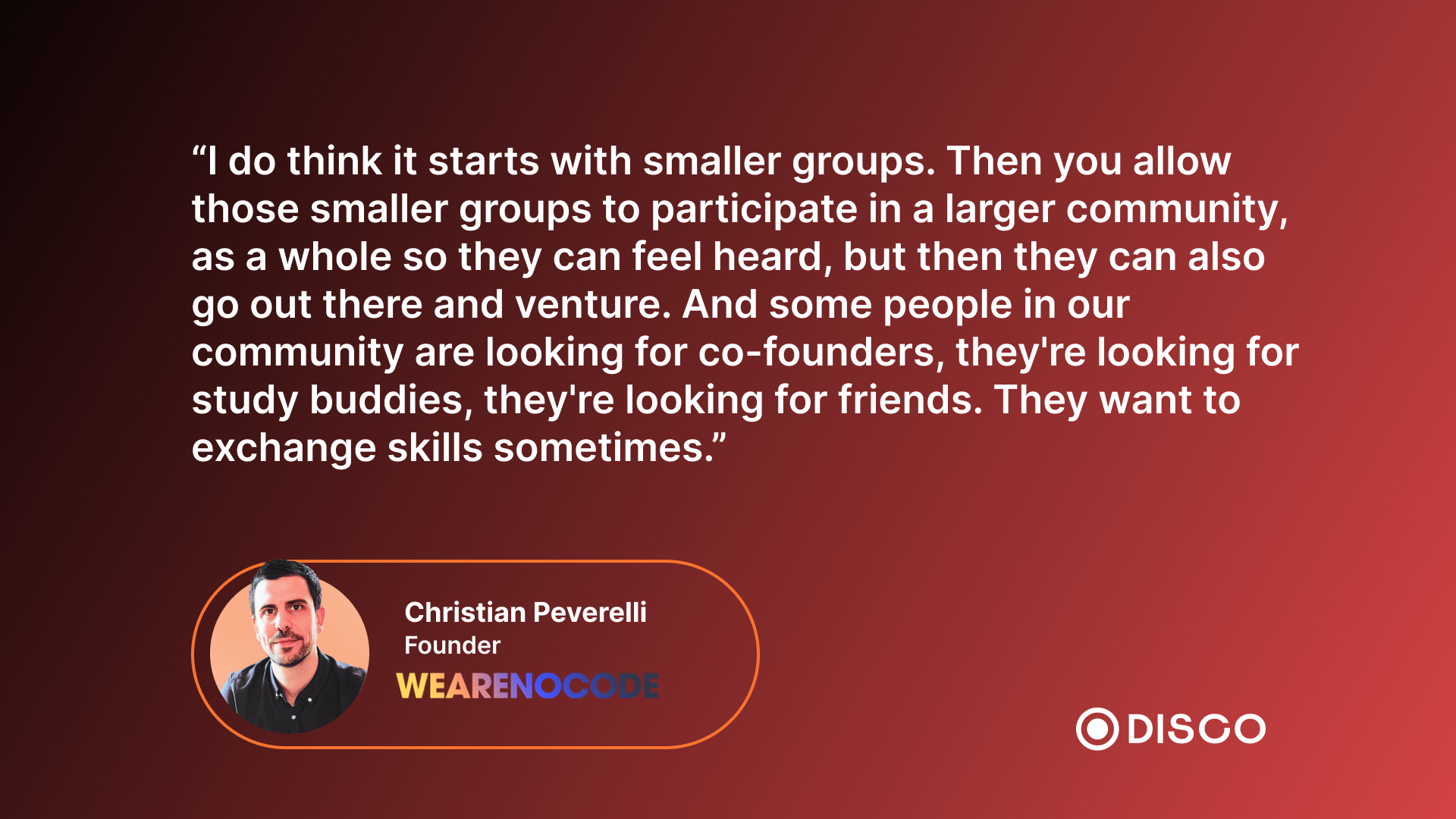
Learning communities don’t just appear out of thin air, either. It takes a lot of cross-functional work within your organization to foster a community that’s open, excited, and eager to learn. For Suzanne Howard at IDEO, creating a thriving learning community starts by equipping her team with the necessary tools:“Enable learning and resource-sharing within your team. Implement documentation processes and create a resource library to capture everything that is happening behind the scenes in your learning organization. From training and onboarding, to tactics, rubrics, and best practices, aggregate learning across your team in order to design better learning experiences and scale your learning empire."
No matter how you approach community building, fostering, and nurturing, ensure that you are prioritizing it. Without keeping community at the center of your virtual learning experience and your business, at that, you won’t have a community to lean on for very long.
